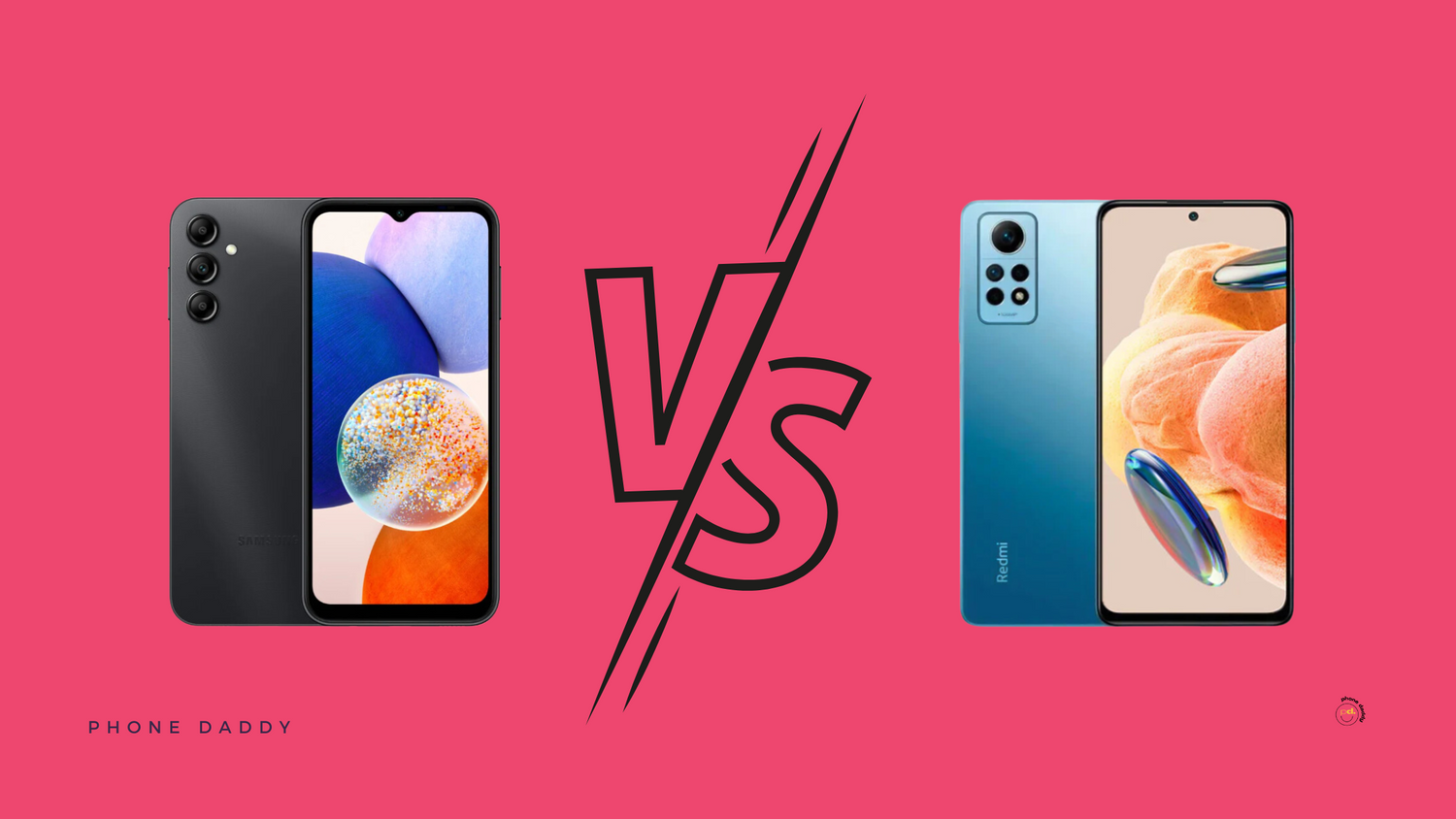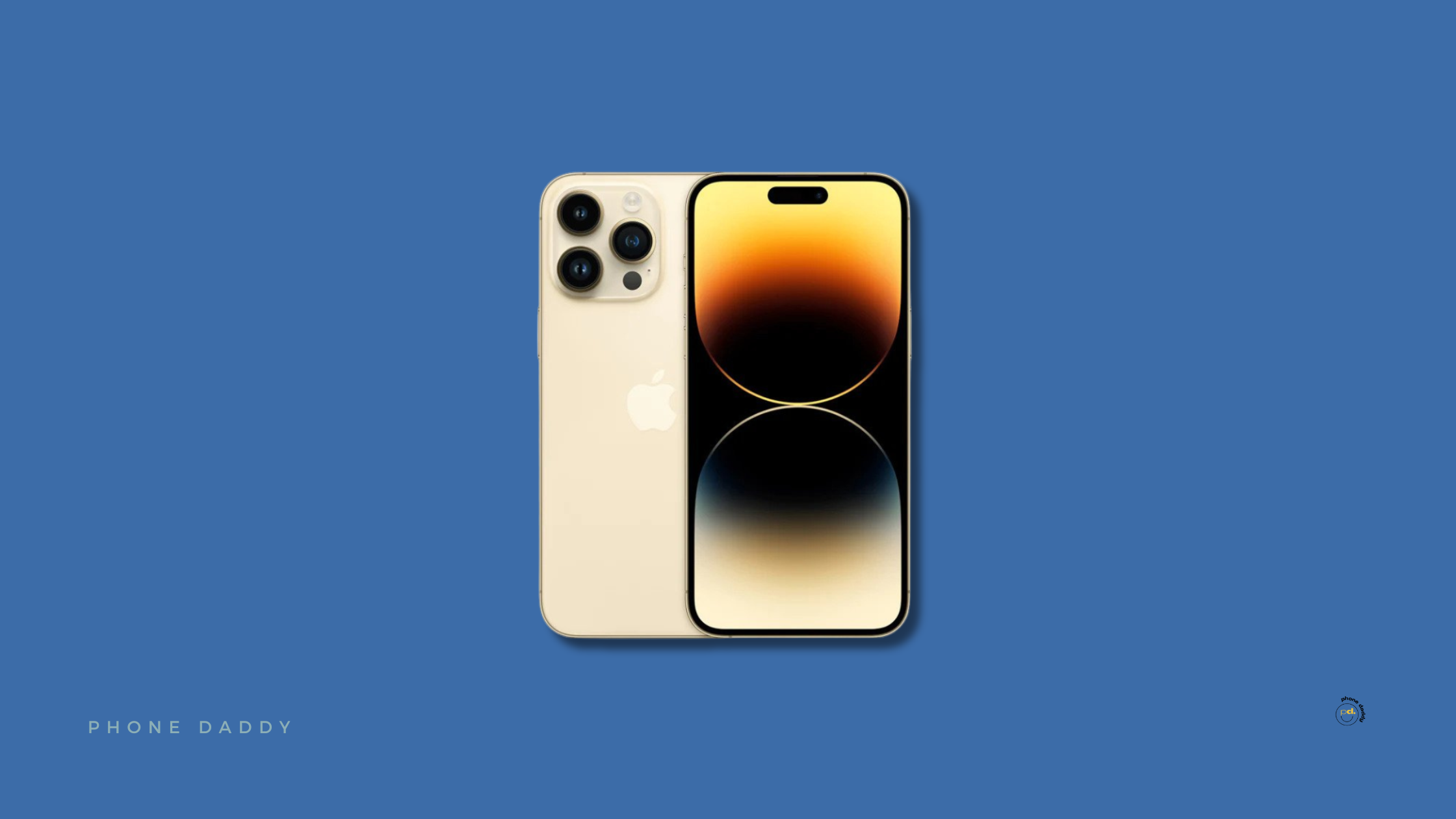- Choose the Redmi Note 12 if you prioritize a smoother display, faster performance, and don't mind the MIUI interface.
- Choose the Galaxy A14 if you prefer a familiar Samsung interface, expandable storage is essential, and you find a better deal.
Choosing a new phone can be tricky, especially when there are so many great options in the budget segment. Today, we're pitting two popular contenders against each other: the Samsung Galaxy A14 and the Xiaomi Redmi Note 12. Let's see which one reigns supreme for you.
Samsung Galaxy A14 vs. Xiaomi Redmi Note 12: Specs Compared
Here's a table comparing the features of the Samsung Galaxy A14 and Xiaomi Redmi Note 12:
|
Feature |
Samsung Galaxy A14 |
Xiaomi Redmi Note 12 |
|
Display |
6.6" PLS LCD, 90Hz |
6.67" AMOLED, 120Hz |
|
Processor |
Octa-core (2x2.4 GHz Cortex-A78 & 6x2.0 GHz Cortex-A55) - SM-A146B |
Octa-core (2x2.0 GHz Cortex-A78 & 6x1.8 GHz Cortex-A55) |
|
RAM |
4GB, 6GB, 8GB |
4GB, 6GB, 8GB |
|
Storage |
64GB and 128GB |
128GB and 256GB |
|
Camera |
Rear: 50 MP wide + 2 MP macro + 2 MP depth Front: 13 MP |
Rear: 48 MP wide + 8 MP ultrawide + 2 MP macro Front: 13MP |
|
Battery |
5000mAh |
5000mAh |
|
Operating System |
Android 13, up to Android 14, One UI Core 6 |
Android 12, MIUI 14, MIUI 13 |
|
Weight |
7.13 oz |
6.63 oz |
How Does the Galaxy A14 Display Compare to the Xiaomi Redmi Note 12?
The Xiaomi Redmi Note 12's display boasts several advantages over the Samsung Galaxy A14's display:
- Technology: The Redmi Note 12 uses AMOLED technology, which offers deeper blacks, richer colors, and potentially better viewing angles compared to the A14's PLS LCD.
- Refresh Rate: The Redmi Note 12's 120Hz refresh rate provides a smoother and more fluid experience, especially when scrolling or gaming. The A14's 90Hz refresh rate is the standard rate and may feel less responsive.
Here's a breakdown of the key differences:
- Blacks: AMOLED displays can completely turn off individual pixels to achieve true black, resulting in higher contrast and deeper blacks. LCD panels struggle to achieve the same level of darkness.
- Colors: AMOLED panels typically offer a wider color gamut, meaning they can display a broader range of colors, resulting in more vibrant and realistic visuals.
- Refresh Rate: The refresh rate refers to how many times per second the screen refreshes the image. A higher refresh rate means smoother scrolling, animations, and potentially better performance in fast-paced games.
However, the Galaxy A14's LCD display might have a slight advantage in terms of power consumption. AMOLED displays consume slightly more battery than LCDs, although the difference might be negligible in everyday use.
Ultimately, the Redmi Note 12's display offers a more visually appealing and fluid experience due to its AMOLED technology and higher refresh rate. If these features are important to you, the Redmi Note 12 might be the better choice. But if raw battery life is a top priority, the A14's LCD might be a consideration.
Does the Galaxy A14 Perform Better than the Xiaomi Redmi Note 12?
The Xiaomi Redmi Note 12 generally outperforms the Samsung Galaxy A14 in terms of processing power. Here's why:
- Processor: The Redmi Note 12 sports the Qualcomm Snapdragon 685, a more recent and powerful processor than the MediaTek Dimensity 700 in the A14. This translates to smoother performance for everyday tasks like web browsing, social media, and multitasking.
- Fabrication Process: The Snapdragon 685 is likely built on a more advanced fabrication process (like 6nm) than the Dimensity 700 (likely 7nm), which means it can be faster and more efficient.
- Benchmarks: Independent benchmark tests like AnTuTu typically show the Snapdragon 685 scoring significantly higher than the Dimensity 700, further indicating the performance advantage of the Redmi Note 12.
Overall, for most users who prioritize smooth performance and potentially handle some light gaming, the Xiaomi Redmi Note 12 with its Snapdragon 685 will be the better choice.
Samsung Galaxy A14 Camera vs. Xiaomi Redmi Note 12 Camera
While the Samsung Galaxy A14 and Xiaomi Redmi Note 12 pack triple rear camera systems, a closer look reveals some key differences that might influence your choice. Here's a breakdown:
|
Feature |
Samsung Galaxy A14 |
Xiaomi Redmi Note 12 |
|
Wide Sensor |
50MP, f/1.8 |
48MP, f/1.8 |
|
Ultrawide Sensor |
No ultrawide sensor |
8MP, f/2.2 |
|
Macro Sensor |
2MP, f/2.4 |
2MP, f/2.4 |
|
Depth Sensor |
2 MP, f/2.4 |
No depth sensor |
|
Front Camera |
13MP, f/2.0 |
13MP, f/2.5 |
|
Video Recording |
1080p @ 30fps |
1080p @ 30fps |
Main Sensor
Both cameras boast similar specs with 50MP and 48MP resolutions and f/1.8 aperture, suggesting similar light-gathering capabilities in well-lit environments.
Ultrawide Sensor
This is where things diverge significantly. The Redmi Note 12 pulls ahead with an 8MP ultrawide sensor, allowing you to capture expansive landscapes or group photos in tight spaces. The A14 lacks an ultrawide sensor entirely.
Macro Sensor & Depth Sensor
Both phones come with 2MP macro sensors for capturing close-up details. However, the A14 adds a 2MP depth sensor, which can assist with creating bokeh effects (background blur) in portrait mode photos. The Redmi Note 12 lacks a dedicated depth sensor, giving an edge to Samsung Galaxy A14, especially for portrait mode enthusiasts.
Front Camera
Both phones sport 13MP front cameras for selfies and video calls. The A14's slightly wider aperture (f/2.0) might allow for better low-light selfies than the Redmi Note 12's (f/2.5). This gives an edge to the Samsung Galaxy A14, potentially for low-light selfies.
The Redmi Note 12 offers greater versatility with its ultrawide sensor, allowing you to capture more in a single shot. The A14 counters with a depth sensor that might enhance portrait mode photos. For everyday shooting and low-light selfies, the difference might be negligible. So, go for the Redmi Note 12 if you crave the versatility of an ultrawide sensor for capturing expansive scenes. And choose the Galaxy A14 if you prioritize a dedicated depth sensor for potentially better portrait mode photos and slightly brighter low-light selfies (based on aperture).
How Does the Galaxy A14 Battery Compare to the Xiaomi Redmi Note 12 Battery?
The Samsung Galaxy A14 and Xiaomi Redmi Note 12 boast identical battery capacities – a generous 5000mAh. In theory, this means both phones should offer similar battery life. However, there are a few factors that can influence how long each phone lasts on a single charge:
- Display Technology: The Redmi Note 12's AMOLED display is generally considered more power-efficient than the A14's LCD display. AMOLED displays can turn off individual pixels for black colors, reducing overall power consumption.
- Processor Efficiency: The Snapdragon 685 in the Redmi Note 12 is built on a more advanced fabrication process (likely 6nm) than the Dimensity 700 in the A14 (likely 7nm). This can lead to improved power efficiency for the Redmi Note 12.
- Software Optimization: Both phone manufacturers optimize their software to manage battery life. Samsung's software optimizations on the A14 might help close the gap, especially if the display is a significant factor in power consumption.
- Real-world Usage: Without in-depth battery drain tests, it's difficult to predict definitively which phone will have superior battery life. These tests typically involve standardized usage patterns and can provide a more accurate picture.
Overall, while the Redmi Note 12 has some potential advantages in terms of display technology and processor efficiency, the A14's software optimization might help mitigate the difference. Real-world usage patterns will likely play a bigger role in determining which phone offers superior battery life.
Final Verdict
Choosing between the Samsung Galaxy A14 and Xiaomi Redmi Note 12 depends on your priorities and needs. Choose the Xiaomi Redmi Note 12 if you prioritize a smoother and more visually appealing display with AMOLED technology and a 120Hz refresh rate. Alternatively, choose the Samsung Galaxy A14 if you prefer a familiar Samsung interface like One UI Core and prioritize a dedicated depth sensor for potentially better portrait mode photos (although the difference might be subtle).
Ultimately, the best phone for you depends on your individual needs and budget. Consider the factors mentioned above and do your research to make an informed decision.



